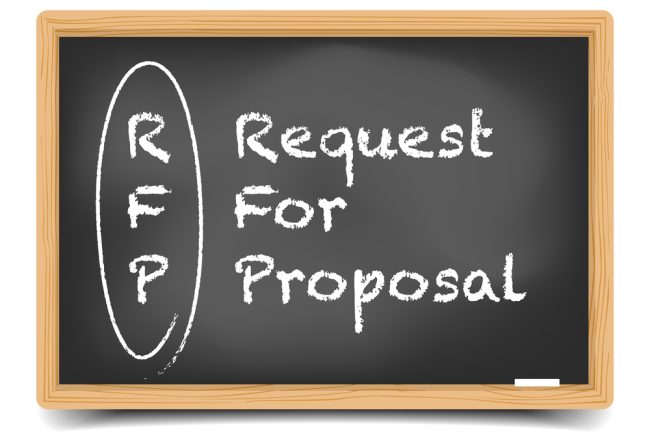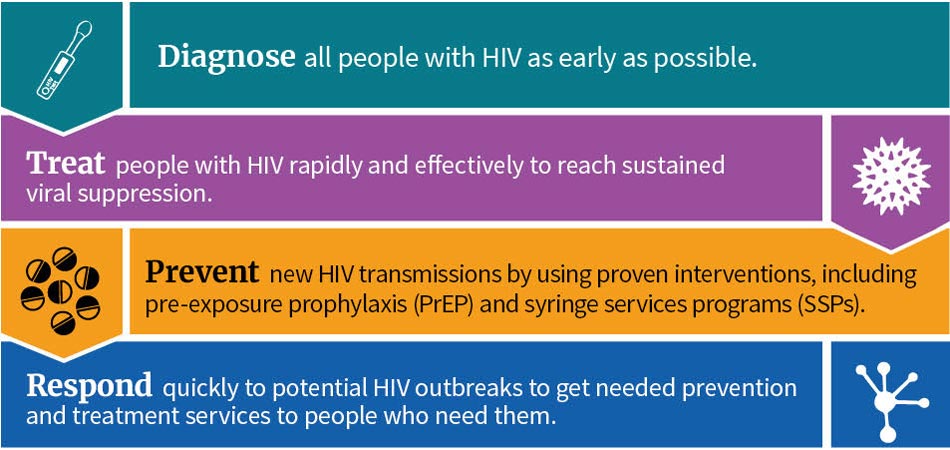HIV: Ending the HIV Epidemic
Program Contacts
Zach Levar
Deputy Director
216.201.2000 ext. 1512
zlevar@ccbh.net
Erin Lark Turcoliveri
Supervisor
216.201.2000 ext. 1326
elark@ccbh.net
The Ending the HIV Epidemic initiative focuses on four key strategies that, implemented together, can end the HIV epidemic in the U.S.: Diagnose, Treat, Prevent, and Respond. Cuyahoga County was identified as one of the 57 priority jurisdictions in U.S. that account for more than half of new HIV diagnoses. The 10 year project aims to end the HIV epidemic in the United States by reducing transmission by 90% by 2030.
Diagnose
Diagnosing those with HIV as early as possible prevents individuals from unknowingly transmitting the virus to others. Proposed strategies in the diagnosis pillar focus on increasing access to testing for all community members by working across social service and health sectors to offer testing in a convenient and accessible way that meets people where they are.
- Equitable Access to HIV Testing: Increase availability of equitable HIV testing throughout the community.
- Increased Utilization Initiatives: Increased utilization of primary care testing, ED testing, community testing locations, testing events and at-home options.
- Partnerships: Strengthen existing and create partnerships with organizations including justice system, family planning, domestic violence centers, human trafficking taskforces & rape crisis centers and within HIV workforce.
- Community Health Workers for Peer Navigation: Expand Integration of Community Health Workers (Peer Navigators) within hospital systems.
Treat
Receiving treatment rapidly and effectively allows PLWH (People Living with HIV) to reach sustained viral suppression. As a person’s viral load becomes undetectable, it also becomes untransmissible. Strategies in the treat pillar focus on guiding PLWH into care and providing the support necessary to remain in care through medical care, support networks, peer support and meeting the basic need of housing.
- Viral Suppression: Enhance opportunity for equitable sustained viral suppression.
- Linkages to Care: Ensure individuals diagnosed with HIV have a realistic pathway to medical care/ treatment.
- Support Networks for PLWH: Develop and strengthen formal support networks for PLWH.
- Peer Support: Develop informal support networks for PLWH.
- Stigma Reduction: Increase public awareness of HIV as a manageable condition in order to reduce stigma associated with accessing care and support networks.
- Integrated Care: Continue to work across organizations to provide integrated care for PLWH.
- Housing: Continue to ensure PLWH maintain or achieve stable housing status.
Prevent
Preventing new HIV transmissions will be essential to ending the HIV epidemic in Cuyahoga County. Five strategies have been proposed to prioritize the continuation of successful existing prevention activities expanding them as necessary, and to create new programs and opportunities for innovative and evidenced based practices to be implemented within the community.
- Condom Distribution: Expand, sustain and promote access to condoms.
- Equitable PrEP/PEP Access: Provide equitable access to PrEP and PEP throughout Cuyahoga County.
- Protective Factors & Risk Reduction: Expand and sustain safe, secure and equitable community spaces that encourage HIV risk reduction including support for Syringe Services Programs.
- Empowering Youth & Young Adults: Increase opportunities for school age youth & young adult MSM to understand how behavior interacts with HIV & sexual health.
- Sex Positive Education for PLWH: Continue to provide opportunities for PLWH to learn about and embrace their role in HIV prevention.
Respond
Responding to HIV outbreaks requires connecting prevention and treatment services to people quickly and effectively. Effective outbreak response must be built on a plan that can be enacted rapidly with clear roles for each entity involved developed prior to an outbreak occurring. Ohio Department of Health and local public health departments, including Cuyahoga County Board of Health, are collaborating on outbreak response plans.
- Partner Identification: Continue to use multiple methods to identify partners of PLWH and advise them on testing and resources.
- Outbreak Response Plan: Further develop a clear plan of action to respond to an HIV outbreak and follow plan if necessary.
Overarching Strategies to End the HIV Epidemic
The eight strategies identified as vital to reaching the goals of ending the HIV epidemic in Cuyahoga County address both systems and individuals. While some may be fully realized within the five years of the plan, others are expected to be a continual process over many years that require collaboration with multiple sectors and planning processes. In some instances, they rely on larger cultural changes that appear to be underway.
- Reduce Systemic Racism
- LGBTQ Inclusivity & Care
- Priority Populations
- Social Impact Media
- Health Education
- HIV Professionals Workforce Development
- Modernization of HIV Laws
- Data & Research Infrastructure
Data Dashboard
America’s HIV Epidemic Analysis Dashboard (AHEAD) supports this effort by tracking data on 6 HIV indicators that will have the greatest impact on ending the epidemic in local communities and across the U.S.
Data 2 Care (D2C) Not in Care (NIC) List Analysis
- 2022 D2C NIC List Analysis
- D2C is an Ohio Department of Health (ODH) program that support the HIV Continuum of Care by utilizing HIV surveillance data to:
- Identify persons with HIV/AIDS in any of the followng counties: Lake, Ashtabula, Geauga, Cuyahoga, Lorain, or Medina, who have fallen out of care, have never accessed care after being diagnosed with HV, or who are in care and not virally suppressed;
- Assist with linkage and engagement in HIV medical care and support services;
- Help Achieve viral suppression; and
- Identify HIV data reporting issues.
EHE Providers Resources
EHE Client Grievance
All EHE/Ryan White Part A service providers must adhere to their established system for client grievances about the operation of the service program. Complaints and grievances against the service provider related to EHE/Ryan White Part A grant supported services should be properly recorded for review by the Cuyahoga County Board of Health. If you are a EHE/Ryan White Part A client dissatisfied with your service, please follow the established grievance process with the provider. Should you remain dissatisfied after the provider grievance process is completed, please contact (216) 201-2001 ext. 1535 or ext. 1340.
Get Involved!
The EHE Community Advisory Group meets quarterly to focus on one of the EHE Pillars: Diagnose, Treat, Prevent, & Respond.
Past Meetings:
2024 KICKOFF MEETING – 4.10.2024
RESPOND – 10.11.23
PREVENT – 7.12.23
TREAT – 4.12.23
DIAGNOSE – 1.11.23




